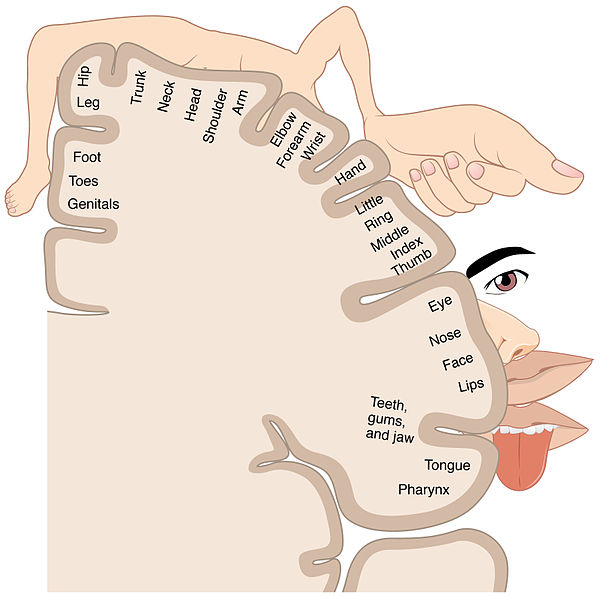Most toes feel alike to me
Can you tell which toe of yours is being touched? When they’re not allowed to peek, many people can’t differentiate between which toes of theirs are being “prodded” by an experimenter.
Sounds a bit kinky:
Researchers at the University of Oxford had people close their eyes while testers gently prodded at their toes. While this happened, the volunteers were asked to identify which of their toes was being poked. They didn’t do very well.
Fingers are very very different; we’re awfully good at identifying digits on the hand, which makes perfect sense considering how important the fingers and hand are and how many nerves connect the hand and brain. Toes/feet, not so much, although certainly they are important. People did well with the big and pinky toes:
But the ones in the middle? It was just 57, 60 and 79 percent for the second, third and fourth toe respectively. Perhaps most amazingly, not a single participant was able to identify which of their toes was being prodded 100 percent of the time and some people could only get the right answer 20 percent of time.
I remember as a child seeing charts that show the relative areas of the brain used by different body parts, and the hands always loomed large and the feet small. Sure enough, here’s one online demonstrating what’s called a cortical homonculus, a “neurological ‘map’ of the anatomical divisions of the body.” Here’s the sensory map; there are motor ones as well:
You can test this at home with your loved ones, folks, for oodles and oodles of fun.
We could use some fun.
[Hat tip: Maetenloch at Ace’s.]


Where would we be without all these researchers, and studies, and the highly advanced Oxford? How in the name of one’s prime deity had the primitives, dark agers, and medievals ascended from abject unknowing and superstition?
Had only they known what we know, imagine what they could have built.
There’s too much time, too much “money”, and too many of the educated with nothing better to do.
I cannot tell except for the big and little toe. The middle ones are indistinguishable. Weird,
That is a very different form of motor control than the spinal reflexes which are often called “muscle memory” in athletics or martial arts.
Conscious control of limbs and muscles, such as learning how to wiggle your ears or forming the vulcan V with the hand.
Generally the reason why thinking is often a good way to get killed in battle is because the frontal lobes take too long to process every specific neural command. Moving movement and skills to a part of the brain that doesn’t require shifting that far into the brain’s consciousness, would reduce signal lag and improve micro second response time.
Consciously thinking of every single movement you need to do is generally not a good idea when the heart beats more than 180 beats per minute. It’s often necessary due to the imprecise movements at that high a heart beat, but it is very slow compared to more automatic movements.
The only time a person does have enough to consciously look at and react with each individual movement, is if they shut off the brain’s auditory and emotional processes, in order to develop what some call “slow time”.
Or in other words, viewing the world at 60 frames per second or greater than that, which essentially “slows” things down to the point where 1 second has very distinct “frames” that you can think about and react to.
In most cases, automatic movements are faster and smoother, depending on training and context.
Tried this tonight with Mr Whatsit. At first, I could only spot the big and little toes. The middle ones were complete mysteries. With practice, I got better, which was reassuring.